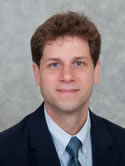| Abstract: |
PURPOSELittle data exist regarding approaches to support oncology professionals who deliver cancer care for underserved populations. In response, ASCO developed the Serving the Underserved Task Force to learn from and support oncology professionals serving underserved populations.METHODSThe Task Force developed a 28-question survey to assess oncology professionals' experiences and strategies to support their work caring for underserved populations. The survey was deployed via an online link to 600 oncology professionals and assessed respondent and patient demographic characteristics, clinic-based processes to coordinate health-related social services, and strategies for professional society support and engagement. We used chi-square tests to evaluate whether there were associations between percent full-time equivalent (FTE) effort serving underserved populations (<50% FTE v ≥50% FTE) with responses.RESULTSOf 462 respondents who completed the survey (77% response rate), 79 (17.1%) were Asian; 30 (6.5%) Black; 43 (9.3%) Hispanic or Latino/Latina; and 277 (60%) White. The majority (n = 366, 79.2%) had a medical doctor degree (MD). A total of 174 (37.7%) had <25% FTE, 151 (32.7%) had 25%-50% FTE, and 121 (26.2%) had ≥50% FTE effort serving underserved populations. Most best guessed patients' sociodemographic characteristics (n = 388; 84%), while 42 (9.2%) used data collected by the clinic. Social workers coordinated most health-related social services. However, in clinical settings with high proportions of underserved patients, there was greater reliance on nonclinical personnel, such as navigators (odds ratio [OR], 2.15 [95% CI, 1.07 to 4.33]) or no individual (OR, 2.55 [95% CI, 1.14 to 5.72]) for addressing mental health needs and greater reliance on physicians or advance practice practitioners (OR, 2.54 [95% CI, 1.11 to 5.81]) or no individual (OR, 1.91 [95% CI, 1.09 to 3.35]) for addressing childcare or eldercare needs compared with social workers. Prioritization of solutions, which did not differ by FTE effort serving underserved populations, included a return-on-investment model to support personnel, integrated health-related social needs screening, and collaboration with the professional society on advocacy and policy.CONCLUSIONThe findings highlight crucial strategies that professional societies can implement to support oncology clinicians serving underserved populations with cancer. © American Society of Clinical Oncology. |



